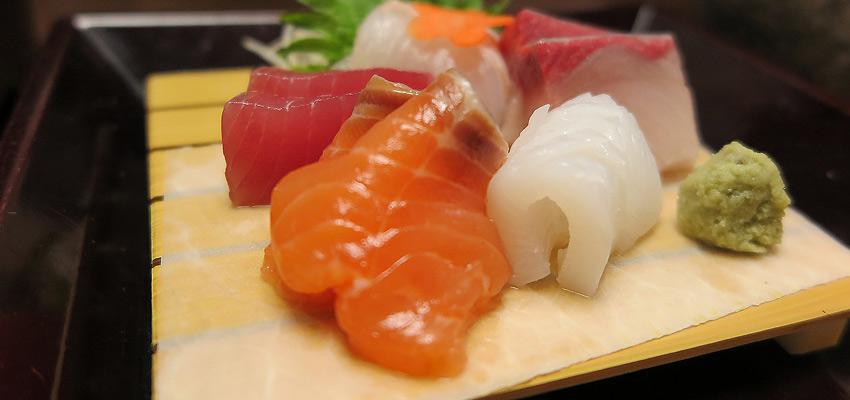This Japanese condiment is as much a part of sashimi, sushi and other dishes as soy sauce and pickled ginger. Real wasabi (Eutrema japonicum) is rare, expensive and often replaced by horseradish paste.
Products containing wasabi also tend to be a little dishonest about the quantities they contain. There are only a few laboratories that can identify and quantify real wasabi.
It takes up to two years for this plant from the cruciferous family to develop to the point where parts of the underground rhizome (root) can be harvested and processed into traditional wasabi paste in a complex procedure. The wild forms of this herbaceous plant grow in marshy areas along rivers and streams. Wasabi for use as a condiment is cultivated not only in Japan, but also in many Asian regions, as well as in Israel and New Zealand. In Europe, wasabi is almost exclusively available as a substitute product. The Japanese refer to these as ‘Seiyō Wasabi’, which means ‘Western wasabi’. Fresh wasabi roots are only available in speciality shops or must be grown at home. Many substitute products contain dried and ground wasabi powder, but only in small quantities – often only 1–2%. In most cases, however, these are made entirely from local horseradish, which is coloured green with chlorophyll.
Only a few connaisseurs of authentic Japanese cuisine are aware of the difference in taste, which makes it even easier for fraudsters to sell inferior seasoning pastes at high prices on the local market. We firmly believe that European consumers also have a right to enjoy authentic Asian cuisine. This includes ensuring that wasabi products are correctly labelled and that the declared content of this valuable ingredient is checked analytically more frequently than is currently the case.
YOUR PLUS: A few years ago, AGROLAB LUFA in Kiel developed a molecular biological method that can be used to determine the proportion of real wasabi in spice pastes, even in routine analysis. The real-time PCR method has been validated and is even accredited
Author: Dr. Frank Mörsberger, AGROLAB GROUP

 Contact
Contact

 Contact
Contact Career
Career